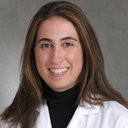Perioperative rates of deep vein thrombosis and pulmonary embolism in normal weight vs obese and morbidly obese surgical patients in the era post venous thromboembolism prophylaxis guidelines.
Keywords
Abstract
BACKGROUND
The increasing prevalence of obesity translates into a greater number of obese patients undergoing general surgery procedures. We questioned if increased awareness and recent prophylaxis guidelines impacted the incidence of venous thromboembolism (VTE) in the obese patients.
METHODS
A total of 33,325 patients who underwent 4 common general surgery procedures from 2005 to 2009 were identified from the American College of Surgeons' National Surgical Quality Improvement Program database. Rates of VTE between 5 body mass index cohorts were compared with univariable analysis.
RESULTS
No significant difference existed between rates of deep vein thrombosis or pulmonary embolism (PE) across the body mass index categories (P = .32 and P = .06, respectively). With the exception of the positive linear trend in the rate of PE for patients undergoing abdominal wall hernia repair (P < .01), there was no difference in deep vein thrombosis or PE rate exhibited by procedure.
CONCLUSIONS
VTE rates in the obese patients are similar to that of the general population with the exception of PE in those undergoing abdominal wall hernia repair.


